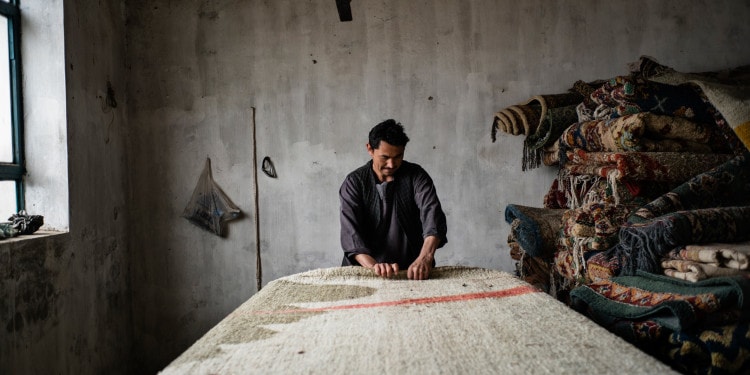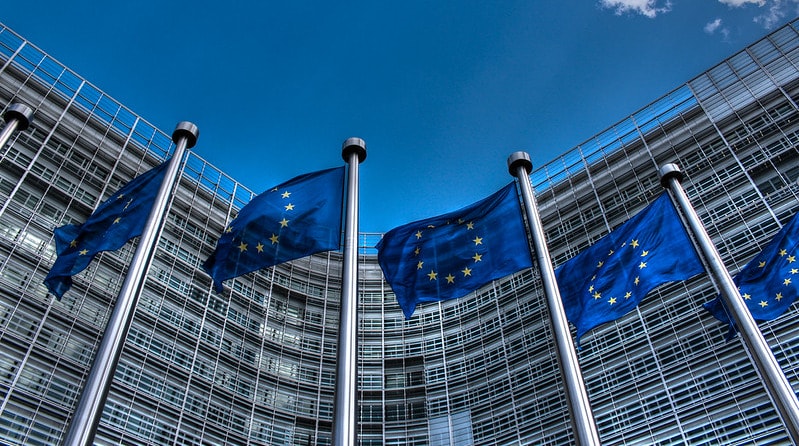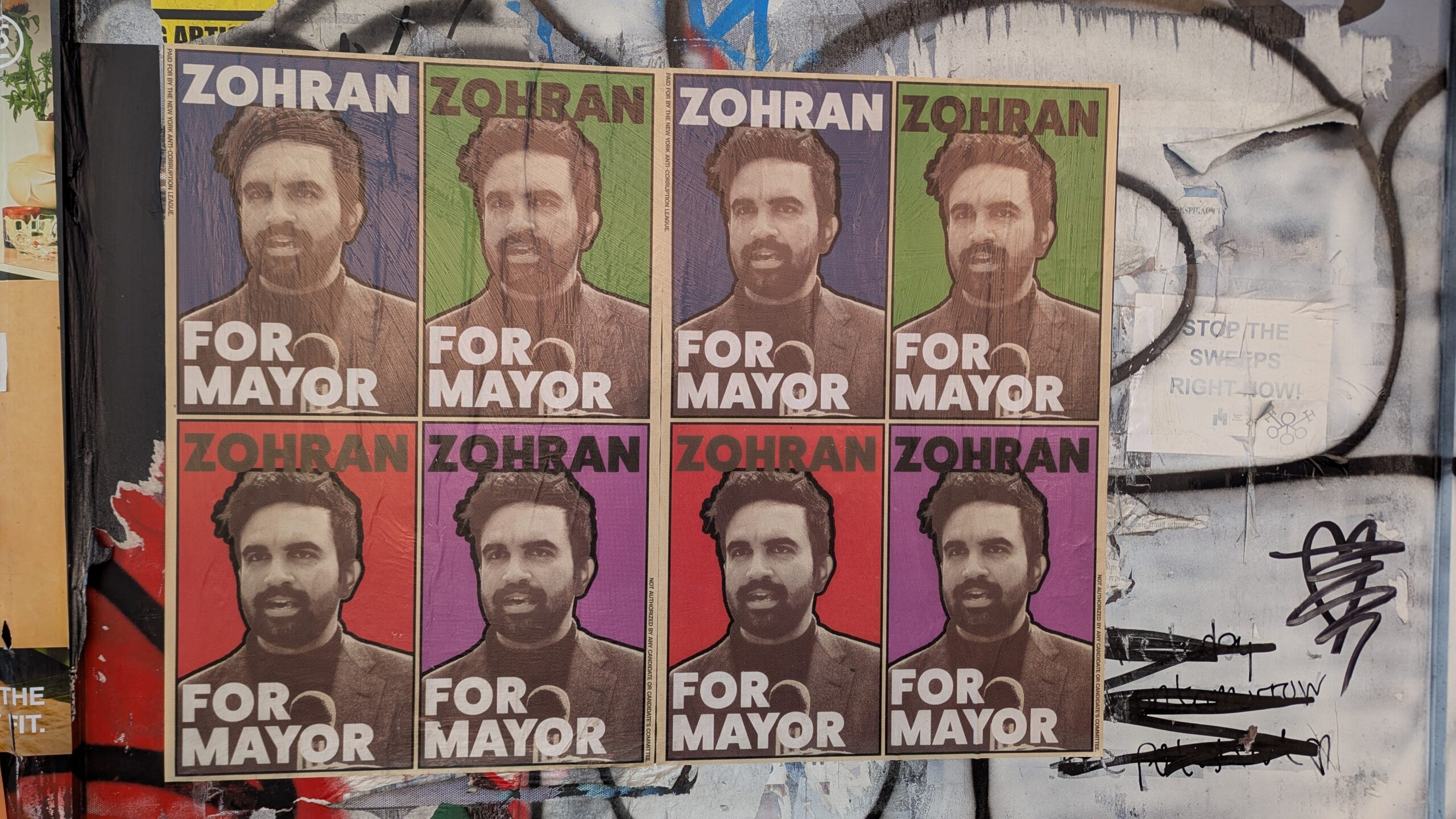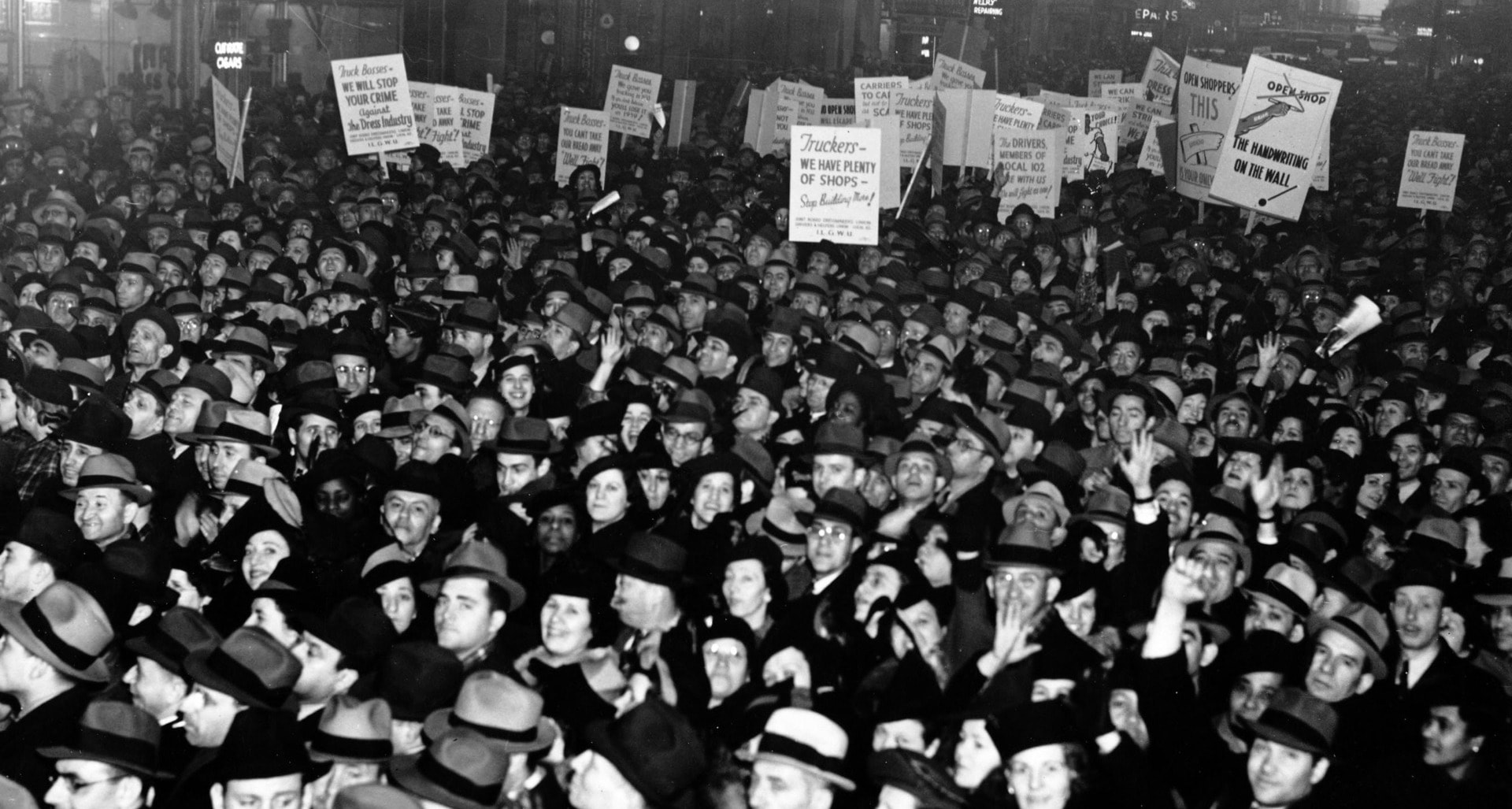The exchange of hand-made artisanal goods has been fundamental to trade throughout the course of human history. Legendary rulers exchanged luxurious gifts to secure key alliances and historic trade routes were established to fuel the large-scale exchange of crafts across cultures. This ultimately laid the foundations for an increasingly more global economy. Craftsmanship played a central role in lending social cohesion, and most importantly, has cultivated a particular artistic heritage in every part of the world that constitutes our cultural patrimony – one that is our obligation to defend – an increasingly difficult task in this landscape polluted by something intrinsic to the mission of modernity: the compulsion to mechanize craftsmanship.
Every day, we see craftsmen in countries all over the world facing hardships as economic opportunity dwindles and industrialist giants flood the market with cheaply made goods. From masters of the ceramic arts in Afghanistan, to velvet weavers in Venice, these craftsmen carry with them a technique that has been optimized by their ancestors throughout the centuries. While the craftsmen tell stories of great cultural importance, the industrialists merely tell stories of mass production, exploitation and injustice.
Today, Edmund le Brun and Flore de Taisne are launching the website for their start-up Ishkar, showing us that making ethical choices as a consumer is paramount. We had the chance to sit down with them to talk about how Ishkar is changing the scene for ethically sourced goods.
Based in London and Paris, Ishkar provides an online ethical marketplace where consumers can purchase artisanal objects directly from the craftsmen. With products ranging from hand-blown glassware to jewelry incorporating the breathtakingly vibrant colour of the famed lapis lazuli stone, they have created a supply network of craftsmen from all over Afghanistan. Through this network, they aim to provide sustainable economic opportunities as well as shed a more positive light on Afghanistan that can help to counter the war-torn image that Western media has promulgated to the exclusion of other realities.
What initially brought you to Afghanistan?
Edmund: I lived in China for a year, in Xinjiang, which is the province which borders Afghanistan. I was living in an old city called Kashgar and it was being destroyed by the Chinese government – all the historic buildings were being knocked down. So I became quite passionately involved in protecting heritage and particularly protecting architectural heritage. When I then heard about a charity called Turquoise Mountain which was restoring the old city of Kabul, it was the perfect opportunity. I initially went out to volunteer for Turquoise Mountain and then got employed.
 IN THE PHOTO: FLORE DE TAISNE & EDMUND LE BRUN PHOTO CREDIT: ISHKAR
IN THE PHOTO: FLORE DE TAISNE & EDMUND LE BRUN PHOTO CREDIT: ISHKAR
Flore: I started off as a consultant for the United Nations and World Bank. Initially, I was specialized in the Middle East but I wanted to discover a completely new country. I had these images of Afghanistan, amazing landscapes – a romantic view of it. Then I worked as a consultant for a year and a half before joining Turquoise Mountain to work on their exhibition in Washington.
 IN THE PHOTO: BAMIYAN, CENTRAL AFGHANISTAN PHOTO CREDIT: FLORE DE TAISNE
IN THE PHOTO: BAMIYAN, CENTRAL AFGHANISTAN PHOTO CREDIT: FLORE DE TAISNE
Can you tell us about what first motivated you to start Ishkar?
E: We were both working for Turquoise Mountain and our job was to set up and provide support to Afghan artisan businesses. The one thing that all the businesses were struggling with, once they had their workspace, and were trained, was how to get their product out directly to customers. So we wanted to create a business which would enable craftsmen in countries which have been cut off by war to sell their products all around the world.
F: The second motivation that was equally as important for us, was that we were coming back from Kabul and people were asking us about Afghanistan and what it was like to live in a country at war. We wanted to show that it was not just war but many other things.
With everything that was happening in Europe with Brexit, the tendency of people to completely close themselves to cultures that were different to theirs, we wanted to show a different side of Afghanistan and similar countries to people around Europe.
Nowadays, there is an increasing presence of markets being flooded by mass produced jewelry and various other objects that were previously made by highly specialized craftsmen. How do you think Afghanistan, having it’s rich cultural and artistic history of traditions can not only overcome this, but adapt to it? How can our generation perpetuate these traditions?
E: What is very clear is that these skills are very under threat in countries like Afghanistan. One of our main products is hand blown glass and we are working with the last remaining glass blower in Afghanistan to get his products out. He is really suffering because of cheap imports coming in from China which are a tenth of the price.
But we actually think it’s a very good time to be a craftsman despite these challenges because in the West certainly, there is a huge movement back towards handmade goods which have lasting value and lasting meaning. We think there is a huge customer pool that doesn’t want to buy things that you get rid of in a few years. They buy fewer items, but the items they buy, they want them to have meaning and be high quality, so I think handmade products really fit that bill.
 IN THE PHOTO: GHULAM SEKHI, LAST REMAINING GLASSBLOWER, HERAT PHOTO CREDIT: ISHKAR
IN THE PHOTO: GHULAM SEKHI, LAST REMAINING GLASSBLOWER, HERAT PHOTO CREDIT: ISHKAR
One of our main products is hand blown glass and we are working with the last remaining glass blower in Afghanistan to get his products out.
F: I think that the reality of the demand side works for us. As Edmund was saying, if there is an Afghan craftsman from the new generation, and their dad was a jeweler or a woodworker, they might see that if there is no economic opportunity linked to their crafts, the new generation might prefer to do something completely different.
This is normal and no one should be criticizing that because it’s their way to survive and provide for their families.
So I think, if all together, the NGOs, designers, the craftsmen and us, can prove that there is value and a market in what they are doing, it will incentivize more generations to pick up the skills from their parents. If we are not able to do that then they will probably shift to something else or they would leave – as a lot of artisans do – to the US, Canada or Germany in hopes of finding better economic opportunities there.
On your website, you write, “Syria, Yemen, Mali, Afghanistan – all countries with extraordinary craftsmanship – have been isolated from global markets by war and insecurity.” Historically, Afghanistan and Syria were a nexus for the convergence of unique artistic traditions due to their strategic position on the Silk Road. In the case of Afghanistan, how do you think the political unrest sustained by the Taliban has created a challenge for the arts industry to continue flourishing? What effects did you see and what do you still see?
E: One of the first really key ones is negative perceptions. So like you say, Afghanistan and Syria were at the nexus of the Silk Road, they do have incredibly rich artistic heritage but that has been forgotten by a lot of people. Even Syria was a country with a huge amount of tourism, until just before the war, and a lot of people knew, took it as a given, that Syria was this place of incredible heritage. But after 5 years of war, that is being forgotten so people don’t expect to be able to buy things from these countries: that is one big way that war has affected this. The second is practical difficulties of trading with these countries. They are difficult to visit, shipping costs are exceptionally high, and communication is quite difficult with artisans as well because they are so far away.
 IN THE PHOTO: TRAY MAKING PHOTO CREDIT: ISHKAR
IN THE PHOTO: TRAY MAKING PHOTO CREDIT: ISHKAR
F: When looking at the political aspect, whether it is the Taliban or ISIS, I think a lot of things just stop working and it is not only a question of people obeying what the Taliban want them to do. The focus is somewhere else, the focus is about survival, so like in Afghanistan you still have places where the Taliban are governing, but jewelry making is something because it is still part of the tradition to give a gold necklace to the daughter that gets married.
We wanted to create a business which would enable craftsmen in countries which have been cut off by war to sell their products all around the world.
Related Article: “THE DIRTY SIDE OF THE GARMENT INDUSTRY: AN INTERVIEW WITH DR. NIKOLAY ANGUELOV“
This brings us to the next question which is that a lot of Western media has misrepresented the totality of war-torn countries: what Afghanistan is, what Syria is now and what it was in the past. How do you hope that Ishkar can alter this on a continuous and sustainable basis?
F: There are two ways, one of which is giving good stories to the media which are different. The BBC covered us so we are hoping that the message is gradually working even though it is not at the same level as war. War still exists and fighting still exists – we’re not saying it doesn’t exist.
However, by showing and selling very high-quality items with the story behind them, people will buy and think about it as a beautiful object from these countries. If they think about Afghanistan, they will think of it as my Afghan carpet in my living room rather than be thinking about the Taliban and terrorist attacks. I think this can be done in a sustainable way by selecting the best products to continually showcase this incredible culture.
 IN THE PHOTO: BLUE IKAT KILIM PHOTO CREDIT: ISHKAR
IN THE PHOTO: BLUE IKAT KILIM PHOTO CREDIT: ISHKAR
I have seen that you have partnered with other similar designers, do you also hope to extend past designers, maybe fashion designers, architects or other cultural institutions?
E: Yes, absolutely. The way we are setting up the businesses is we are seeking out collaborations all the time so the more different cultural actors we can get involved in the project the better.
F: We are collaborating with NGOs who themselves have their own networks, for example, we are selling two carpets made by architects Zaha Hadid and Frank Gehry which was a result of Arzu, an American NGO. With these names on board, we can convince others that they are actually useful high-quality products that take inspiration from skills and designs in these countries.
 IN THE PHOTO: RABIA MULTIDROP PIPPA SMALL JEWELRY , MODEL – LOUSIE CAMU PHOTO CREDIT: ALICE AEDY
IN THE PHOTO: RABIA MULTIDROP PIPPA SMALL JEWELRY , MODEL – LOUSIE CAMU PHOTO CREDIT: ALICE AEDY
How did you manage to create your network and how do you plan to expand it to the different countries you want to involve?
E: Syria, Yemen, and Iraq are all unique challenges. We have started off by spending a month in Lebanon this summer and we were looking at Syrian refugees there who were artisans in Syria, and have these great skills but don’t have jobs in Lebanon. So we are developing products at the moment with Syrians in Lebanon. We are also currently doing some research on weavers in Iraq. The only real way to do this is to go and actually meet the people in person, so we would love to go out to Iraq and see if we can meet the craftsmen there. A lot of it has to be face to face, as personal interactions are very difficult to do remotely.
 IN THE PHOTO: MUSTAFA, WOODWORKER PHOTO CREDIT: ISHKAR
IN THE PHOTO: MUSTAFA, WOODWORKER PHOTO CREDIT: ISHKAR
F: We have to keep in mind that there is very little legal protection in these countries and it’s quite an extreme frontier market.
Trust is the basis of all the business and we think that this can be even more sustainable than the law as it is something that can really support the business.
If there is somebody who is in Iraq and you are only exchanging text messages or WhatsApp messages, they never know who you are, they might not think you are even worthy of their crafts so we really just need to go there. People have been in touch telling us about different craftsmen in various countries, trust is at the root of this. We are not just packing our bags and going to war-torn countries, we are doing it in a reasonable manner and having the security information that we need to be able to do the job properly.
 PHOTO CREDIT : ISHKAR
PHOTO CREDIT : ISHKAR
That brings us to our last question, what does the word ‘Ishkar’ mean and how does it emblematize what you are working towards?
E: Ishkar is the name of a plant found in the deserts of northern Afghanistan. For thousands of years Afghan craftsmen have used the ashes of this plant and combined them with dyes to bring out the very intense colours which are really distinctive in Afghanistan’s craft.
On one level, for us, it’s a real story of how the alchemy that goes into a crafted product, the way craftsmen, just by testing and testing different materials, worked out that this ash really brought out the vivacity of the colour – is quite a special story.
The second significance is that an unremarkable looking desert plant having these visually extraordinary properties is somewhat emblematic of the countries we are dealing with. Especially as many people consider them as cultureless places when in reality this is far from the case.
To learn more about ISHKAR take a look at their website and follow them on Facebook and Instagram.
_ _














